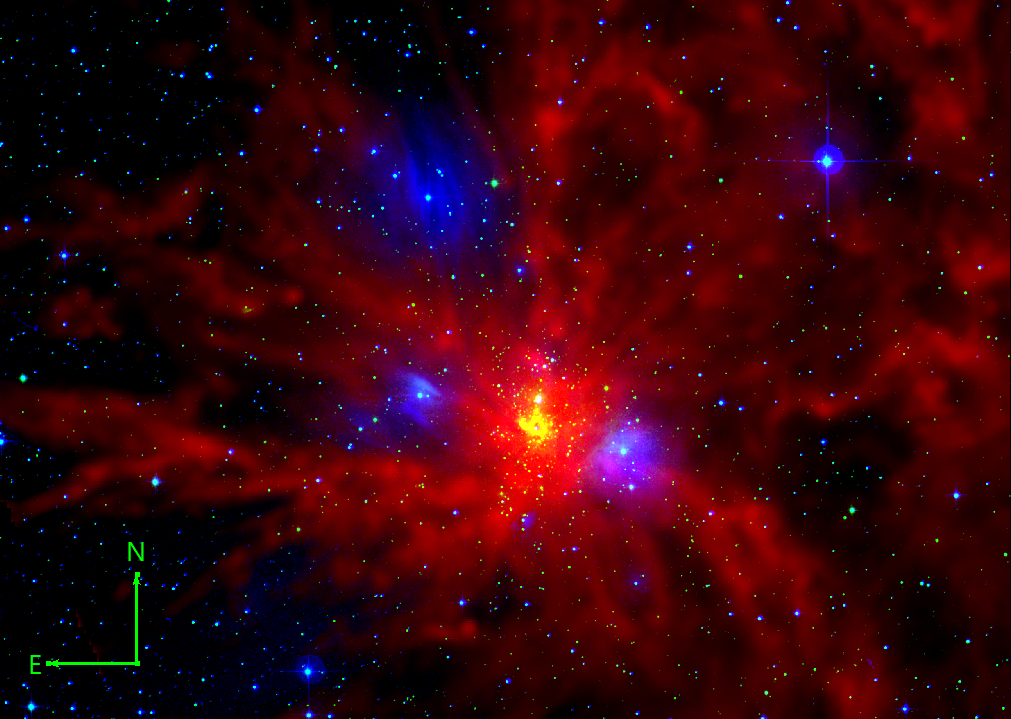Observatorio Astronómico Nacional
Infraestructura científica con más de 200 años

Medio interestelar
Además de estrellas, nuestra galaxia contiene abundante materia difusa que se distribuye por todo su volumen y constituye lo que llamamos el medio interestelar. Este medio juega un papel fundamental en el ciclo de la vida de las estrellas, pues es donde reside la materia de la que nacen, y es el lugar al que ésta retorna cuando las estrellas expulsan sus capas externas al morir.
El medio interestelar es un entorno complejo. Su materia no se encuentra distribuida de manera uniforme, sino que consta de diferentes fases con temperaturas que van desde los pocos grados kelvin (cerca del cero absoluto) en las zonas de formación estelar hasta los millones de grados kelvin observados en los remanentes de supernova. Las densidades de la materia interestelar también varían órdenes de magnitud según la fase, pero son siempre tan bajas que rivalizan con las que se pueden conseguir en las mejores cámaras de vacío de los laboratorios terrestres. Según las condiciones de densidad y temperatura, la materia interestelar se encuentra en estado molecular, atómico, o ionizado, aunque el estado no es permanente, pues la materia circula entre los distintas fases en un continuo ciclo de evolución a escala galáctica.
Debido a las muy diferentes características de sus múltiples fases, el medio interestelar tiene que ser estudiado usando diversas técnicas observacionales y diferentes tipos de telescopios. Las componentes más frías del medio interestelar no emiten luz visible, y requieren para su observación el uso de telescopios sensibles a la débil emisión de ondas de radio que este material produce. Usando distintos radio telescopios, como el de 40 metros de diámetro del Observatorio de Yebes, los que el Instituto de Radio Astronomía Milimétrica (IRAM), al que pertenece el IGN, tiene en Grenoble y Granada, o el Atacama Large Millimeter/submillimeter Array (ALMA) en el desierto de Atacama en Chile, los astrónomos del Observatorio Astronómico Nacional contribuyen a caracterizar las propiedades físicas y químicas de las nubes moleculares donde nacen las estrellas y de las envolturas circumestelares producidas por las estrellas en las últimas etapas de sus vidas. El estudio de estas regiones está ayudando a completar nuestro conocimiento de las fases más desconocidas del complejo ciclo de la vida de las estrellas.

